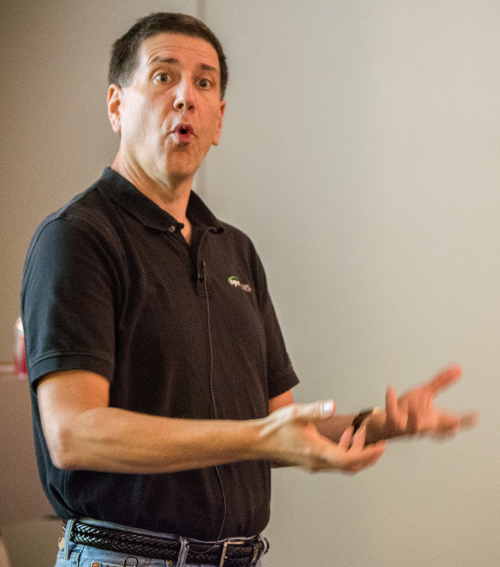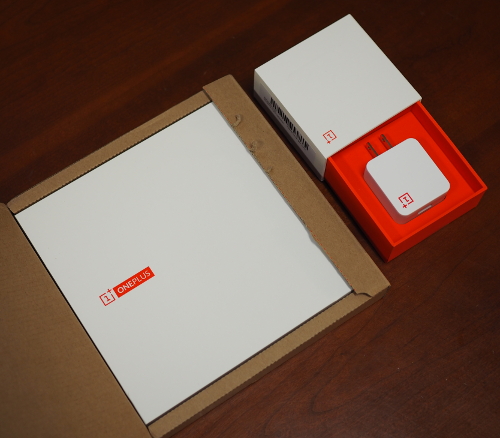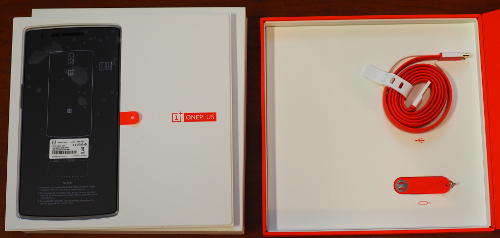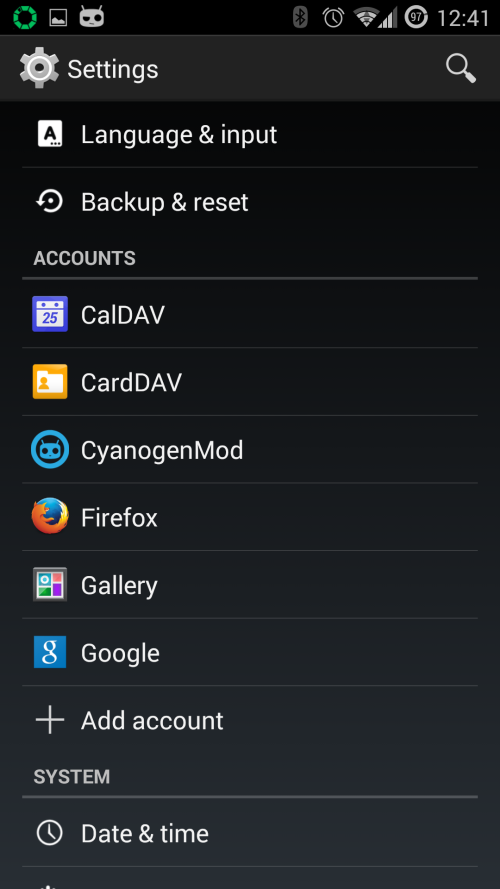Note: This is a travel/food blog post with no OpenNMS content. As usual, feel free to skip.
I consider myself insanely wealthy. Not in terms of money, most people could always use a little more, but because I’ve managed to meet some truly amazing people in my life, and even better, there still seems to be a nice supply of them. My life has been greatly enriched because of it.
One such person is Geoff Davis, who I met in high school (he was a year younger but in all my advanced courses) who now works at Google. The last time I was out there he and his bride took me to dinner in the Mission, and while we were talking about food he mentioned the Alinea.
The Alinea restaurant is located in Chicago, and it is one of only thirteen (when I booked it was ten) Michelin three star restaurants in the country. I happened to be in Chicago this week, and as this trip was planned months ago I was able to book a table for six. The experience was pretty amazing.

The name comes from an archaic mark similar to the “paragraph” symbol: ¶. The alinea looks more like an inverted “D” with two vertical marks, and in the name of the restaurant it represents “a new beginning”.
The booking process was unique as well. I like to cook, and occasionally (very occasionally) after one of my better efforts, someone will say “you should open a restaurant”.
Hell no. Owning and running a restaurant is incredibly hard work. People who aren’t into food (and some who are) just don’t realize it. Part of the problem is that people have few qualms about either canceling a reservation at the last minute or not showing up at all.
The Alinea addresses this by selling tickets instead of taking reservations. I’m not sure it would work for every restaurant, but when you have a place with a) high demand and b) a prix fixe menu it seems to work well. There is a long discussion of the history of the ticketing system available so I won’t repeat it here, but it did resonate with my innate fondness for unusual business models.
The restaurant itself is very non-descript. Most of our party met at Boka next door for drinks (an excellent restaurant on its own right with its own Michelin star). I probably wouldn’t have known where to enter the Alinea if I wasn’t shown the way.
You enter in via a dark corridor highlighted by red lights, and it seems to narrow a bit. When you reach the end you are greeted by what I would come to recognize as the level of service that helps the Alinea keeps its stars. For our group of six there were at least three people there to take our coats. One pair in our party had arrived with their car, so the staff took the valet parking slip to make sure the car would be ready when it was time to leave. We were served by no less than twenty people during the evening but it was perfect – they were there when you needed them and quickly gone when you didn’t.
We were shown upstairs to our table. The restaurant only accepts parties of two, four or six. Party of three? You buy an extra ticket, and since they are quite spendy my guess is you’d find an excuse to invite Aunt Edna out for the evening.
Just a quick note: I wanted to immerse myself in the experience so I took no photographs or notes. I might get some of the details wrong so I will apologize in advance since my memory isn’t what it used to be.
Our host Miguel, I would not call him a server even though he did serve us food, welcomed us and explained how the evening would play out. We were to have 15, maybe 16 courses and there was an optional wine pairing. He stressed that the wine servings were modest and that it would end up being about four glasses of wine total. The “maybe” 16th course was a special: white truffle risotto. When I visit my friend Antonio in Italy (another amazing person who has enriched my life) I always tease him about this very expensive food. When he asks what I want to eat I say “tartufo bianco”. I love truffles but as Cat, one of our dinner companions, pointed out, having such an extravagant course here would be like gilding the lily. Plus, the $150/person cost put it out of my league – I had to cash in my Christmas and Birthday presents to swing the dinner alone.
I got excited when they prepared to bring out the first course. They placed little white pillows on the table in front of each of us and on it was a caviar spoon (I love fish eggs of any type). Miguel explained that the silverware we’d need for each course would be placed on the pillow and that we were to leave the used items with the serving dish in order to keep the pillow clean for the next course.
Speaking again of the crazy level of service, if one of us got up to use the restroom, one of the staff would immediately remove the napkin and replace it with a fresh one. Cat explained that napkins are meant to be used, and no one should have to come back to a soiled one. Crazy, but cool.
The first course was Osetra caviar served with a variety of other flavors. I was not going to do the wine pairing, but I agreed to start off with a glass of champagne (Pierre Moncuit Blanc des Blancs Brut NV) as did Ron (what else do you pair with caviar?). Demetri and Cat did get the pairing, while my lovely bride Andrea ordered a glass of Riesling and Colleen stuck with water.
The caviar was delightful.
The second course arrived in the form of two large “tumbleweeds” made up of intertwined brown vines. Each was about twice the size of a basketball. We were told we had to find the second course hidden within the branches. In each ball was hidden a piece of salsify, a root vegetable that had been cooked sous vide and heavily seasoned. It matched the color of the vine exactly but had a much softer texture. It was tasty, although this is one of the few places I’ve eaten where you had to ask yourself “is this bit the food?”.
The third course was skate, cooked sous vide and seasoned with brown butter, lemon and herbs. The paired wine was an A.J. Adam “Dhroner” Riesling (Mosel 2012). I made a joke about “Dhroner kebabs” that fell flat. Demetri had me taste some of his and I liked it so much I changed my mind about skipping the wine pairing. It was the most tender skate I’ve ever eaten, and it makes me want to explore sous vide cooking even more.
Course number four was ebi, or sweet shrimp for those of you who like sushi. It was paired with Muscadet Sevre et Maine “Granite” (Domaine de l’Ecu 2010) which I found to be too mineral. I remember liking this dish but I don’t remember too much of the details, since it was eclipsed by …
Corn. The fifth course arrived served in roasted corn husks, causing me to remark “look, the world’s most expensive tamale”. It was far from a traditional tamale. The corn was whole, roasted and served over a bed of creamy grits. The whole thing was seasoned with truffle, manchego cheese and sherry. Think about how much corn you have eaten in your lifetime – this redefined it for me. We were told that this was the next to last night it would be served as the seasons were changing. When asked how they were able to get the corn off the cob yet have it hold its shape, the secret is that the whole cob is dipped in clarified butter so that the kernels can be sliced off but still stick together.
The sixth course arrived on pieces of wood that used to be barrel staves. It was trout in white pepper, coriander and broccoli. Outside of eating off a stick (we asked and were told the staves were cleaned in the dishwasher and then burnt with a torch) in the middle were pieces of bone – a small bit of spine and the plate near the cheek of the fish. We were told that, indeed, this was food. It was surprisingly tasty, although I think I cut my tongue a little on the spiny bit. This was paired with a Chablis (Laurent Tribut 2011) that I quite liked.
Flowers made up the seventh course, mainly lilies, with rambutan and a caviar lime sauce.
Now at the halfway point, the staff brought out two stone plates topped with pieces of wood. They set these on fire, and the smoke and light added a nice ambiance.
Course number eight featured matsutake mushrooms, which I adore. It was served with a number of sweet flavors, including a huckleberry foam and tapioca. In keeping with the Japanese association with this food, the pairing was sake, Tensei “Song of the Sea” Junmai Ginjo-shu (Kumazawa Shuzo, Kanagawa-ken). I loved the food but just liked the sake (I’m pretty particular about sake).
The ninth course was a bit of a surprise. The wood/fire centerpieces, which had now gone out, were dissected and out of them came our food. It was charred pork belly served with compressed parsnip. Yummy. It was served with our first red of the evening, Donkey and Goat “Testa Vineyard” Carignane (Mendocino 2013), which was very nice.
Dish number ten was also unusual. It was a warm butter-based broth served in a small, concave bowl made of wax (it reminded me of nothing less than a huge contact lens). Suspended above it on a steel pin was a piece of potato and truffle. You were told to pull the pin, causing the items on it to fall into the broth and then eat the whole thing in a shot. Tasty, but I spilled a little of mine. I believe it was on the table for about 450ms before someone had wiped it up.
The last mainly savory dish of the night was squab. Served on a piece of dark wood that looked like the top of a tree trunk, the roasted squab was served with carrot, potato, beet and an orange sauce. There was also a piece of squab liver as well. The pairing was another red, Valpolicella Classico Superiore (Tomasso Bussola 2009) which complemented the meat well.
The twelfth dish started the transition to sweet. Called “graffiti” it was a hazelnut candy, like a praline, served with balsamic vinegar on a matching piece of gray stone. This was the only misstep by the staff. Ron doesn’t like balsamic vinegar but they missed his request not to spray it on. I like balsamic but this dish was only “good” for me. The pairing, however, was a Vergano Chinato Moscato “Luli”. Lately I’ve become enamoured of sweet dessert wines like Sauternes and this Moscato was delicious. I’ll seek it out when I get home.
Probably the oddest dish (in an evening of odd dishes) was dish number thirteen. Featuring blueberries, part of the dish was a foam made from Bubble Yum™ chewing gum. I double-checked to make sure we could eat it. Believe it or not, it really worked. The pairing was another Muscat wine, Jorge Ordonez “Victoria” (Muscat, Malaga 2013) which I liked considerably less than the Vergano, but it was still good.
If you read about the Alinea, you’ll often see pictures of transparent white balloons. That was our fourteenth course of the evening. Made with a green apple candy, the balloons are served filled with helium with a taffy string. The way we would told to eat this was to try and suck the helium out of the balloon and then talk. Yes – fun with food. It is this kind of whimsy that made the evening worthwhile, and the fact that in the end you could eat pretty much everything was also a plus.
The final course was the most elaborate. We all moved to one side of the table which was then covered in a large rubber sheet. The head chef himself, Grant Achatz, came out and using about 15-20 small dishes painted our final course directly on the table. It was a combination of tropical fruit flavors. There was mango, passion fruit, compressed melon, a coconut meringue flash frozen in liquid nitrogen, a kaffir lime “candy” with edible wrapper, roasted banana, pineapple – and I forget what else. The chef was professional if not extremely outgoing. I was so busy watching him and his associate work (the table size required two people) that he was there and gone before I knew it.
The final wine pairing was a Passito di Pantelleria (Fernandes 2006) which I honestly can’t remember. It was at this time I first looked at my watch and realized that four hours had passed.
Leaving the restaurant was as efficient as our arrival. Not only were our coats and bags waiting for us, so was Ron’s car and two taxis for the rest of the group.
If you are into food and can make it to Chicago I can highly recommend the Alinea. Better yet, if you have some amazing friends like I have in Ron, Colleen, Demetri and Cat (plus my BFF Andrea) it will be an experience to remember. Yes, it is pricey, but one of the keys to happiness is to buy experiences and not things.
In that realm I am a very rich and happy man.








